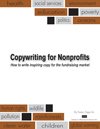Email is a great way to cultivate your donors, members, prospects, advocates, or anyone. In other words it’s a relatively quick and cost effective tool for building relationships that result in higher retention and generosity.
There are many ways you can cultivate via email including the sharing of success stories about your mission (without an “ask” for money).
But today I want to focus on one specific type of cultivation email: Invite readers to post info on your website.
In the email your call to action is an invitation to share information that gets published on dedicated page on your nonprofit website. This engages readers, adds content to your website, encourages others to get involved, and clarifies the impact of your mission through the words of your supporters.
Reading the words of other donors – peers – is dynamite. It’s some of the most impactful copy possible. It motivates response.
For a prospect it brings them one step closer to being a donor and strengthens their connection to you.
For a donor it strengthens the existing relationship. Every interaction – and the variety of interactions that go beyond a donation – builds loyalty and lifetime donor value.
For an advocate it’s another way for them to voice their opinion and support of what you do.
How it might work:
Email takes them to a unique landing page. Have just a bit of copy at the top to remind them what you’re looking for. Then show the SIMPLE form they fill out to complete the call to action (e.g., name, email, where they’re from, and the box to type in their comments).
Be very clear about how much of their information will be published on the website. Perhaps all that’s published is their first name, state, and their comments.
After they submit their info and comments, they’re redirected to the web page where the all comments are displayed to everyone who visits your site.
It should only take them a few minutes to do this – unless they get very long winded in their remarks which is just fine!
And they receive a thank you email for responding.
What follows are several ideas to illustrate how essentially any nonprofit could ask readers and supporters to comment on their website:
Parks / Hiking Trails – my favorite trip to a National Park or the fun on a specific trail (what I saw)
College / University – my favorite memory from school or how my education paid off after graduation (the benefit and what it did for my life); or the satisfaction I receive knowing my donation helped a current student stay in school because of the needs-based scholarship they received.
Community Center – stories from families and kids who use the center; what it means to have a safe place to go where they can have fun, learn, etc.; or talk about their favorite activity at the center and why it’s important to them.
Faith-based – stories of answered prayers
Veterans – how I felt sending a care package to a service member; what it meant to receive a thank you card from the soldier; or if your charity is tied to a specific war (e.g., WWII, Korea, Vietnam, Iraq/Afghanistan), share a memory of someone lost during the conflict, someone you served with, etc.
Arts / Culture – stories from artists who benefit from what you do; messages from patrons who love the music, the art, etc. . . . how it fills their soul with joy; or what it means to have the art displayed in a patron’s home.
Foundation – The fulfillment grant recipients experienced through the grants you award; donors and beneficiaries share stories and thoughts about how important your work is and what it means to them; or how their charity grew and succeeded thanks to your support.
Aviation – The Honor Flight Network publishes comments from WWII veterans who receive a free flight to Washington D.C. to visit the National WWII Memorial and other memorials. The comments are very moving and therefore inspire others to support the cause.
Hospital – Comments from patients and families of patients on the loving care they received from a staff member.
Literacy – people share what it meant to learn how to read (their family members can also share); also consider podcasts so those who can’t yet read might listen to the stories and be inspired to learn.
Cultivation email is powerful. Done correctly it helps increase retention and ultimately funds raised. And the possibilities regarding the many ways you can use it to build stronger relationships with your donors, prospects, and members is limited only by your imagination.

{ 2 trackbacks }
{ 0 comments… add one now }